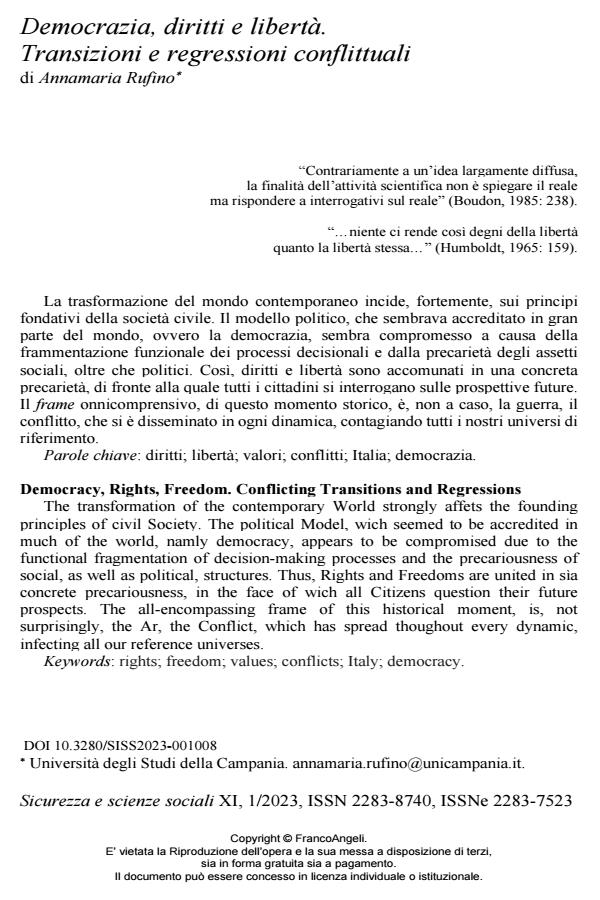Democracy, Rights, Freedom. Conflicting Transitions and Regressions
Journal title SICUREZZA E SCIENZE SOCIALI
Author/s Annamaria Rufino
Publishing Year 2023 Issue 2023/1
Language Italian Pages 12 P. 83-94 File size 171 KB
DOI 10.3280/SISS2023-001008
DOI is like a bar code for intellectual property: to have more infomation
click here
Below, you can see the article first page
If you want to buy this article in PDF format, you can do it, following the instructions to buy download credits

FrancoAngeli is member of Publishers International Linking Association, Inc (PILA), a not-for-profit association which run the CrossRef service enabling links to and from online scholarly content.
The transformation of the contemporary World strongly affets the founding principles of civil Society. The political Model, wich seemed to be accredited in much of the world, namly democracy, appears to be compromised due to the functional fragmentation of decision-making processes and the precariousness of social, as well as political, structures. Thus, Rights and Freedoms are united in sìa concrete precariousness, in the face of wich all Citizens question their future prospects. The all-encompassing frame of this historical moment, is, not surprisingly, the Ar, the Conflict, which has spread thoughout every dynamic, infecting all our reference universes.
Keywords: rights; freedom; values; conflicts; Italy; democracy.
Annamaria Rufino, Democrazia, diritti e libertà. Transizioni e regressioni conflittuali in "SICUREZZA E SCIENZE SOCIALI" 1/2023, pp 83-94, DOI: 10.3280/SISS2023-001008